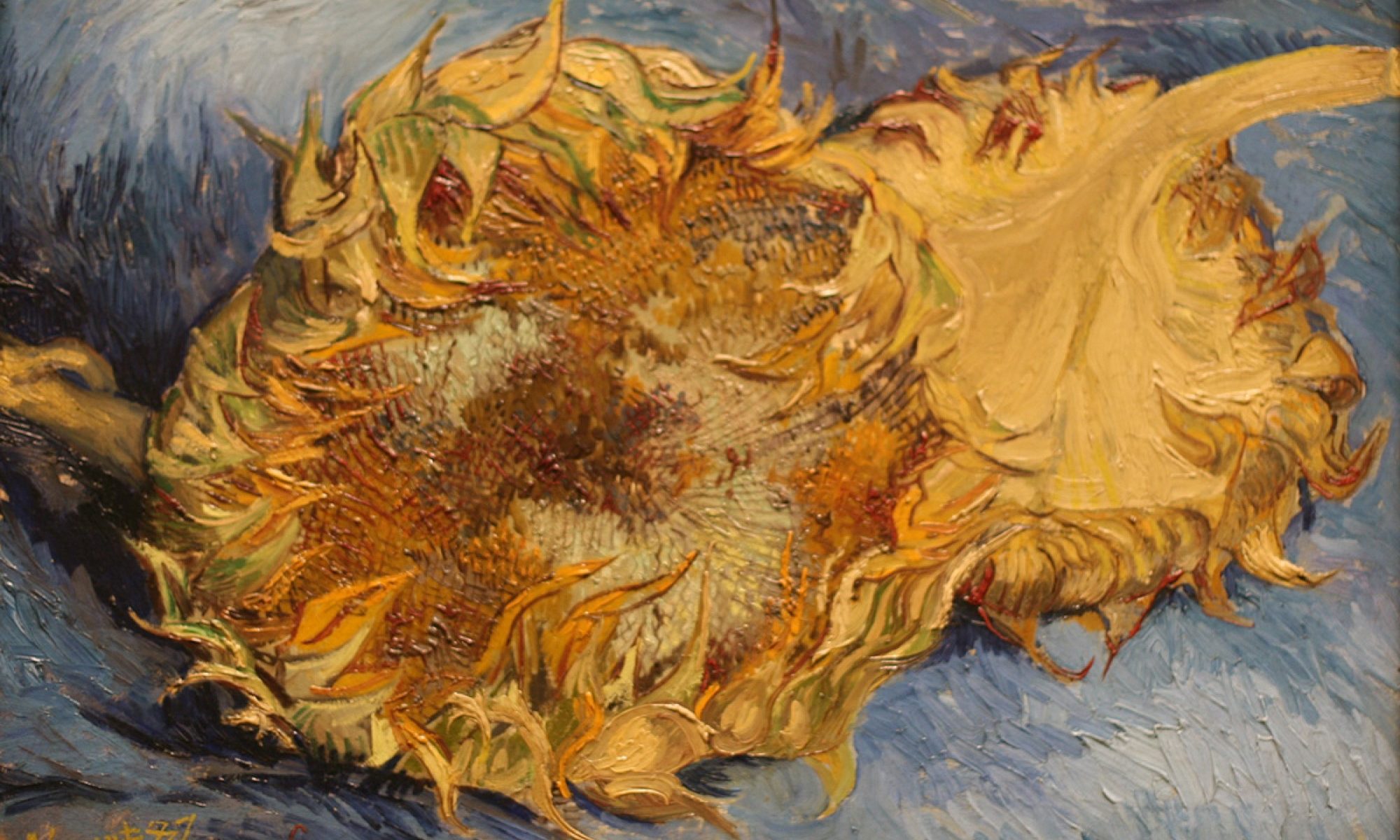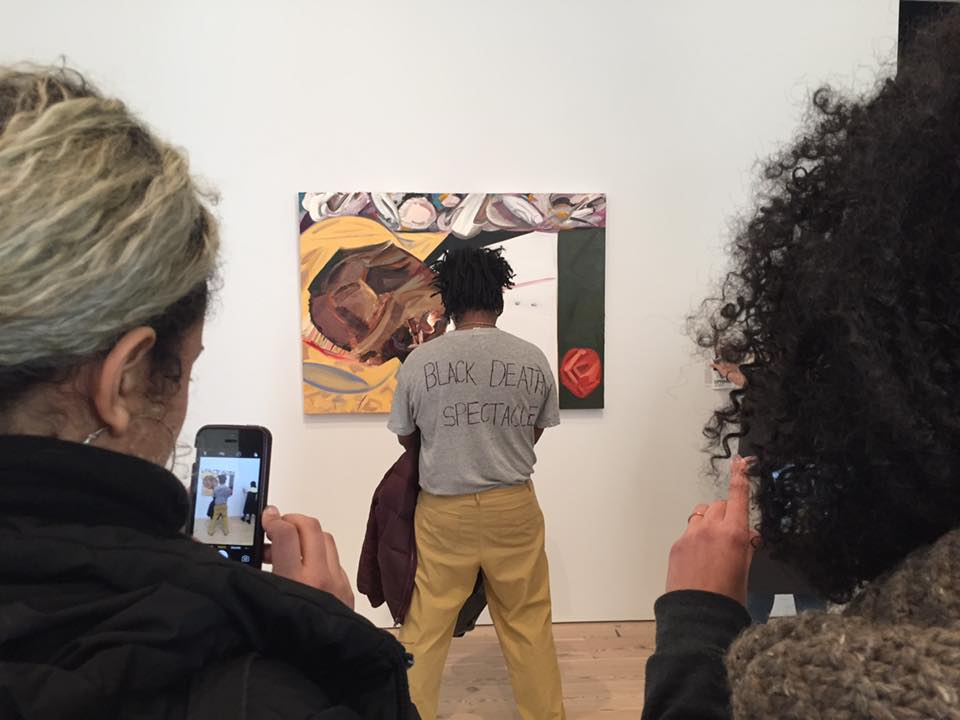On Friday, October 14th, members of the activist group Just Stop Oil gained international attention by throwing cans of tomato soup on Vincent van Gogh’s Sunflowers. The two women who threw the cans were arrested and charged with criminal damage. London’s National Gallery, the home of the painting, stated that the painting was undamaged. This incident is one of numerous protests by the group, including vandalizing a luxury department store, disrupting sporting events and blocking traffic, sometimes by gluing themselves to roads and others by climbing on bridges. Targeting Sunflowers appears to have inspired copycat protests; on Sunday, October 23rd two protestors associated with the organization Letzte Generation (Last Generation), a German climate activist group, threw mashed potatoes on Monet’s Les Meules (Haystacks). This painting was also behind glass and undamaged.
These incidents have drawn backlash. Suella Braverman, the Home Secretary of the United Kingdom, referred to blocking traffic and slowing emergency vehicles as “completely indefensible,” calling for new legislation to counter the protests. Op-eds have called into question the means of targeting artwork, declaring that it is unlikely to drum up support. Others have argued against the mission of Just Stop Oil altogether, claiming that increased energy prices from ending oil production will simply harm the low income individuals while also criticizing the means of protest. Some on social media have adopted the conspiratorial view that Just Stop Oil is actually funded by oil interests in order to turn the public against climate activists.
However, there seems to be an unexamined assumption built into some of these criticisms.
Namely, I am interested in exploring why one would think that protests which target art would fail to garner support. This critique is often presented baldly. So, my goal is to consider some assertions one might make in claiming that protests which target art are ineffective and misdirected.
Perhaps some find fault with these protests because they are illegal. These protests are, after all, a form of vandalism. Yet this reasoning is specious for at least two reasons. First, legal and moral judgments are distinct. Few think that burning witches at the stake was moral, despite being the result of a legal process. Second, this analysis would result in a general prohibition on civil disobedience. Civil disobedience, helpfully analyzed by Giles Howdle here, is a form of protest that involves breaking laws one perceives to be unjust, and accepting the legal consequences that follow. This tactic was commonly deployed in universally approved movements, such as the U.S. Civil Rights movement and the Indian independence movement. This suggests that illegality is not, by itself, a way to demonstrate that a protest is immoral.
Another way one might object to these methods of protest is through an appeal to the harm principle. This principle states that acts are immoral if they produce harm. However, the claim needs to be further specified.
Some permissible forms of protests like boycotts may actually intend harm, although the picture is somewhat complicated.
Nonetheless, a protest’s causing harm does not seem like a sufficient reason for condemnation. Much more compelling is the claim that innocents ought not be harmed.
But first we need to identify these innocents. Perhaps one candidate is the museums themselves. Although the paintings were unharmed, there will be some costs to repair or replace their frames. Further, additional security may be needed, incurring costs to prevent incidents in the future. However, there are two issues with grounding the objection in harm to the museums.
First, museums do not seem to be the kind of entity whose interests count morally. Second, it is possible that these protests could benefit the museums in the long run.
Perhaps now more people will visit art galleries, hoping to see works before they suffer damage or to witness the next incident. So, until we have some idea of the long-term consequences, we cannot be sure that they harm the museum.
Perhaps the victims are instead the museum guests. After all, they bought tickets to see works of art. Unfortunately, their ability to do so was hampered by the actions of the protestors. Entire sections of the museum were closed following the protests. Still, these “harms” alone do not seem sufficient to show that the protests are wrong. Protests we consider justified often inflict this sort of collateral damage. Suppose, for instance, a group protested an unjust war at a local park, and this protest forced a family to cancel their annual reunion. Although regrettable, this by itself does not seem to make the protest immoral. Perhaps something like the doctrine of double effect holds here – so long as innocents are not the direct target, third parties may be forcibly and permissibly inconvenienced by protests.
One might argue that those who had their sensibilities offended by the actions of the protestors were harmed – the harm being psychological or emotional rather than physical. What would be offensive about these protests?
Well, the protestors engaged in what we might call profane acts. By profane, I mean actions that did not demonstrate the proper sort of respect or reverence towards a deserving object. The idea here being that great works of art may deserve our respect.
So, the act of throwing food on these works, even if aimed at contributing to a greater cause, demonstrates improper disrespect towards the art itself. But note, again, that the works targeted by the protestors in this particular case were not harmed. Instead, the moral fault – if there is one – must reside in what the acts demonstrated, not their results.
Why would art deserve respect? A likely reason is that they have significant aesthetic value. L.W. Sumner describes aesthetically valuable things as those “which we find in some respect appealing or attractive or admirable.” The aesthetic value may come both from their physical appearance, as well as their significance in the history of art. So perhaps many found these protests shocking or offensive because to throw food on these artworks – even if they are protected – is to behave in a way that is unbecoming of their value.
Yet this may be precisely what the protests are trading on.
If climate change is indeed an existential threat, with consequences that threaten human civilization, many, many valuable things will be lost if we do not act soon. These losses would certainly include at least some priceless works of art. As a result, the protestors may be making a kind of trade-off.
They are willing to engage in profane behavior in hopes that it will help preserve value in the long run – not just works of art, but the many human and non-human lives that will be lost with the worst consequences of climate change.
Certainly, these protests targeting art have indeed been shocking. But before condemning them we must take a step back and reflect on the nature of the values at stake. Do works of art like Sunflowers and Haystacks have value such that we can never engage in behavior which disrespects that value? In other words, do they pose constraints on our behavior, such that certain acts are off-limits no matter how dire the circumstances? If not, then we ought to ask ourselves when we can transgress these values. Without proper assessment, we cannot be certain whether the protestors erred in selecting their target, or whether the error was made by those who offhandedly dismiss these protests.



